A popular commercial slogan when I was growing up in the 1960s was Zenith’s “quality goes in before the name goes on.” Incidentally, we had only one TV all the years of my childhood, a tubeless black-and-white Zenith.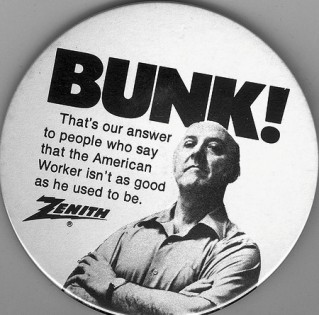
Back then, we took for granted that first-rate products always would be made in the United States, and only cheap articles came from overseas.
Zenith manufacturing plants were sprinkled all over the county in the 1960s, 70s and 80s. Even tiny Marshfield, Missouri, had a plant that employed a considerable percentage of the town. People in Marshfield old enough to remember still refer to the Zenith plant closing like they would a catastrophe.
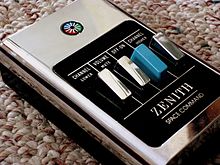 Among other industry firsts, Zenith engineers pioneered a reliable wireless remote control, the “Space Command”. Zenith invented subscription television and FM multiplex stereo, and is credited with developing flat-face picture tubes and HDTV years ahead of anyone else in North America. Incorporated in 1923, Zenith introduced the first portable radio in 1924, the first mass-produced AC radio in 1926, and push-button tuning in 1927.
Among other industry firsts, Zenith engineers pioneered a reliable wireless remote control, the “Space Command”. Zenith invented subscription television and FM multiplex stereo, and is credited with developing flat-face picture tubes and HDTV years ahead of anyone else in North America. Incorporated in 1923, Zenith introduced the first portable radio in 1924, the first mass-produced AC radio in 1926, and push-button tuning in 1927.
Still, by the 1970s, Zenith was losing its hold on the market with the influx of imported Japanese electronics. In 1974 Zenith brought suit in federal court against the major Japanese TV and electronics manufacturers for violating U.S. Antitrust Laws and the Antidumping Act of 1916. Sears and Motorola companies soon joined the lawsuit. By 1987, millions of litigation dollars later, the Supreme Court had dismissed the cases and refused to hear appeals. Soon after, Zenith filed for bankruptcy. Ultimately, the South Korean company, LG Electronics acquired a controlling share of Zenith in 1995 and eventually the rest in 1999.
 Meanwhile, in his first bid for president, Texas billionaire Ross Perot warned in campaign speeches that Americans would hear a loud sucking sound as U.S. jobs went across the border to Mexico. Perot lost the election to Bill Clinton, who supported the North American Free Trade Agreement, which went into effect in January 1992 when Clinton took office. Today, Mexico is hearing the sucking sound in stereo as jobs there leave for India and China.
Meanwhile, in his first bid for president, Texas billionaire Ross Perot warned in campaign speeches that Americans would hear a loud sucking sound as U.S. jobs went across the border to Mexico. Perot lost the election to Bill Clinton, who supported the North American Free Trade Agreement, which went into effect in January 1992 when Clinton took office. Today, Mexico is hearing the sucking sound in stereo as jobs there leave for India and China.
Any craftsman understands the frustration of walking through Walmart or other big-box stores and seeing an item selling for much less than is possible for us to make it. After gaping at a cute matching potholder and oven mitt set in Walmart for $1.99 (not a sale price, but everyday low price as Walmart proclaims), I whined to a fellow seamstress, Joyce, about it. Even if I were to receive the fabric totally free, already cut into shapes and pinned together, I’d still have to stitch and package the set for $1.99.
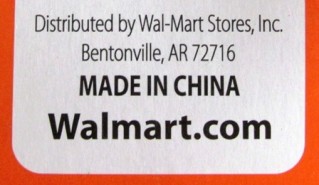 Joyce mentioned the hand-crocheted blankets she’d seen in Kohl’s for less than $50 in all sorts of dazzling colors and sizes from twin to king. The same is true of hand-quilted bed covers. It had taken my friend several months to crochet a blanket years ago, but it is still in use and cherished today. I see many of those inexpensive imported quilts barely used, but already falling apart, in thrift stores for a dollar or two.
Joyce mentioned the hand-crocheted blankets she’d seen in Kohl’s for less than $50 in all sorts of dazzling colors and sizes from twin to king. The same is true of hand-quilted bed covers. It had taken my friend several months to crochet a blanket years ago, but it is still in use and cherished today. I see many of those inexpensive imported quilts barely used, but already falling apart, in thrift stores for a dollar or two.
I returned to Walmart to look again at the oven mitt set and discovered the same faulty workmanship. The image was stamped onto the fabric and the potholder was barely larger than my hand. Ah, that made me feel better.
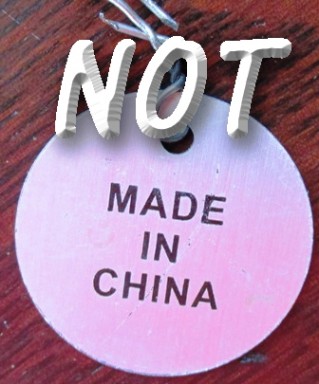 I wondered, though, if the average consumer who is not a craftsperson understands about quality materials and fabrication. Founded on the principles of selling U.S. made products to support local economies, Walmart is now filled with imports. Maybe because it is all that’s available. Another friend told me she has difficulty locating American-made products to sell in her online store, and has purchased products that she was told were made in America, later discovering a made-in-elsewhere sticker.
I wondered, though, if the average consumer who is not a craftsperson understands about quality materials and fabrication. Founded on the principles of selling U.S. made products to support local economies, Walmart is now filled with imports. Maybe because it is all that’s available. Another friend told me she has difficulty locating American-made products to sell in her online store, and has purchased products that she was told were made in America, later discovering a made-in-elsewhere sticker.
Just like Zenith testified decades ago, those of us who make goods to sell guarantee the quality goes in before the name goes on. I concentrate on every stitch when I make a clothespin bag or other treadle-sewn item, and don’t hesitate to rip out a line of stitching I consider unsatisfactory. My mission is to also reduce the load on our world’s landfills. I recycle fabrics and use 100-percent cotton whenever I can. This dedication to preserving our natural resources is by no means unique to me.
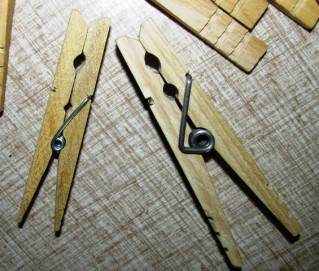 Clothespin maker Herrick Kimball of Monrovia, New York, doesn’t aspire to be the clothespin baron of the world. He wants only to make the best product possible, one he can proudly put his name on. Herrick even helps others learn to make clothespins to sell themselves. His Classic American Clothespins are not inexpensive, but will last a generation or two or three. And you won’t look out the window and see your freshly-washed clothes blowing across the yard as often happens with the cheap imports.
Clothespin maker Herrick Kimball of Monrovia, New York, doesn’t aspire to be the clothespin baron of the world. He wants only to make the best product possible, one he can proudly put his name on. Herrick even helps others learn to make clothespins to sell themselves. His Classic American Clothespins are not inexpensive, but will last a generation or two or three. And you won’t look out the window and see your freshly-washed clothes blowing across the yard as often happens with the cheap imports.
Neighborly goat-soap maker Janet Nysewander of Happy Daze Farm is presenting a workshop tomorrow at the local food co-op to teach soap-making. This may seem contrary to her soap-selling business. But, like other crafters I know, Janet wants to keep alive a lost art, help others become self-sufficient, restore local trade, encourage using all-natural, renewable products and promote alternatives to imports.
Other local crafters here include weavers, potters, gardeners, cheese makers, quilters, woodworkers, leatherworkers, and, of course, butchers, bakers and candlestick makers. None of us can make our wares cheaper than the big-box stores can sell them for.
But we can make them better.
©2014 Well WaterBoy Products LLC ♦ WaterBuck Pump™ ♦ Pedal Powered PTO™ 
